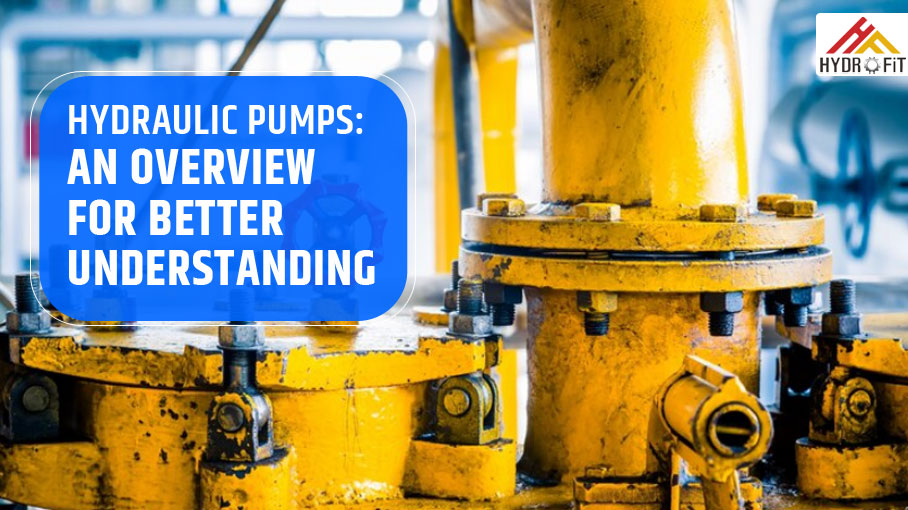Hydraulic Pumps: an overview for better understanding
Posted on March 8th, 2024
Hydraulic equipment is gaining significance in modern manufacturing and construction. Please find out about the nitty-gritty of Hydraulic pumps before investing in and implementing them.
Hydraulic equipment has landed as a predominant utility in the construction industry due to its safe and effective way of handling large loads. Hydraulics is used by large equipment like graders, excavators, loaders, and dump trucks in the modern industry. Not only that, they are also implemented by comparatively more minor equipment like scissor lifts, trenchers, and concrete pumping systems for the completion of construction tasks.
Hydraulic pumps have become a significant necessity for all construction projects today. Electric motors are used to operate hydraulic pumps, which transform electrical energy into fluid pressure. Each and every hydraulic drive requires these. Hydraulic fluid subsequently provides the necessary pressure level and volume of fluid to cylinders, actuators, and hydraulic motors.
What do You need To Know About The Operations Of Hydraulic Pumps?
A hydraulic pump is referred to a heavy-duty mechanical device that has the ability to transform mechanical power into hydraulic energy. It has the ability to generate a flow sturdy enough to overcome load-induced pressure. When operating, a hydraulic pump serves two primary purposes.
Firstly, its mechanical action creates a vacuum at the pump inlet, consequently allowing atmospheric pressure to drive liquid from the reservoir and then pumping it through to the inlet line of the pump. Second, this liquid is forced into the hydraulic system by its mechanical action, which transports it to the pump output.
A Clearer Understanding of the Functionality of the Hydraulic Pump Parts
Before purchasing and utilising heavy-duty hydraulic pumps for your construction projects, it is imperative to break them down and comprehend their detailed mechanism. This approach can help eliminate the chances of damaging the machinery or inviting unnecessary accidents in the field. It is imperative to provide your employees with proper training before implementing the equipment. The following demonstration breaks down the details of the functionality of hydraulic pump parts.
- The reservoir’s primary purpose is to hold hydraulic fluid that has yet to be used.
- The pump produces and passes on a fluid flow inside the hydraulic system.
- The viscous fluid that the pump transfers is moved by tubes or hoses. This pipe equipment subsequently transports the liquid to the hydraulic cylinder.
- Hydraulic energy is converted to mechanical energy by actuators.
- By controlling the actuators’ output and returning the liquid to the reservoir when required, pressure relief valves stop overpressure. Hydraulic fluid flow can be deviated in both size and direction with the use of directional control valves.
Which Hydraulic Pump Kinds Are The Most Popular?
The vane, gear, and radial piston pump are the three most popular types of hydraulic pumps. All of the three categories of pumps are excellent for typical hydraulic applications. However, for higher pressures, the piston design is advised for implementation.
Positive displacement pumps make up the majority of pumps utilised in hydraulic systems nowadays. This indicates that each pumping element rotation cycle displaces the same volume of liquid. Almost constant supply each cycle is maintained irrespective of variations in pressure.
Hydraulic pumps with positive displacement can be classified as fixed or variable displacement. At a specific pump speed and during each pumping cycle, the output of a fixed displacement pump is constant. The output of the variable displacement pump is modified by adjusting the displacement chamber’s configuration.
Because fixed displacement pumps, also known as screw pumps, produce very little noise, they are ideal for usage in settings like opera halls and theatres. Conversely, variable displacement pumps work effectively in circuits that use hydraulic motors and when reversibility or varied speeds are required.
What Considerations to Make While Selecting a Hydraulic Pump
It is often not advisable to count exclusively on one type of power transmission, even if hydraulic power transmission is exclusively helpful for multiple professional applications. On the contrary, blending various power transmission methods, such as hydraulic, mechanical, electrical, and pneumatic, is the most effective tactic.
Henceforth, in order to apply appropriately in any commercial project, hydraulic systems need to be properly integrated into an inclusive power transmission strategy. Working with a reputed and reliable Hydraulic Company can contribute to successfully executing an effective hydraulic strategy. The best place to look for an established hydraulic supplier is online. Therefore, it is a wise long-term investment to secure the future of your budding business.

